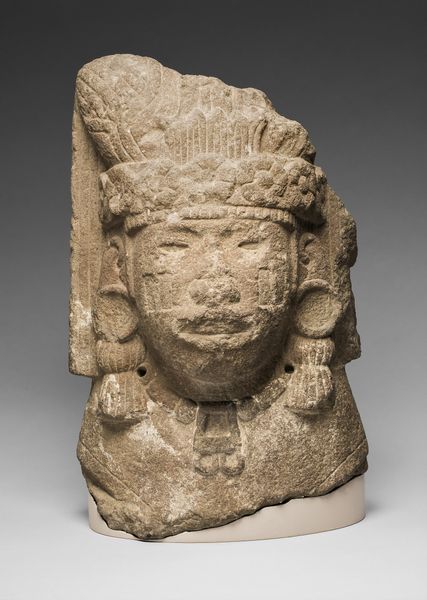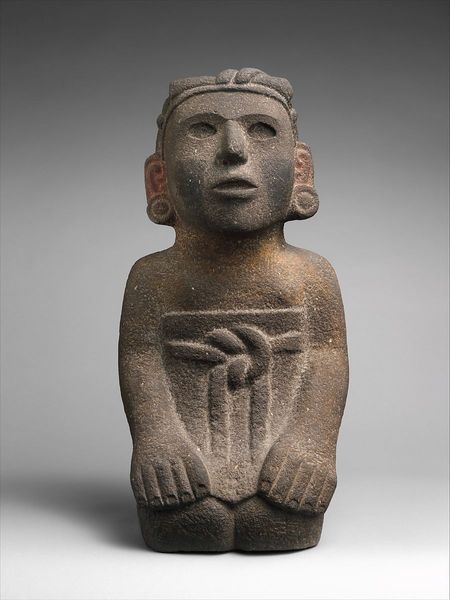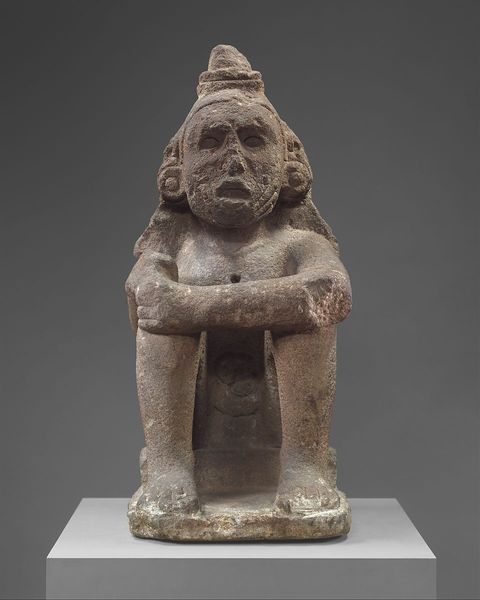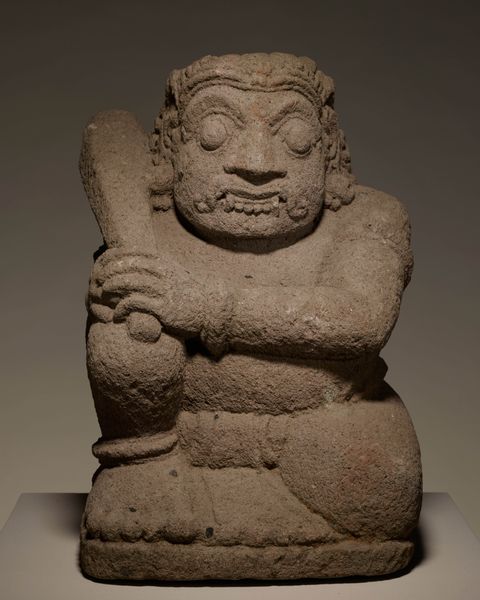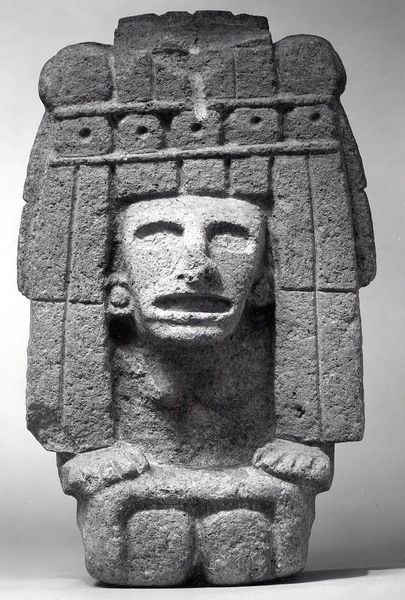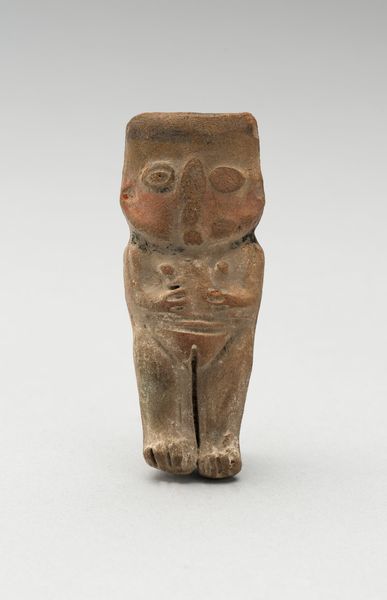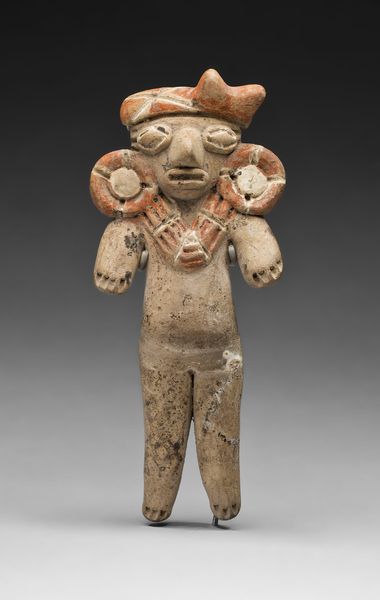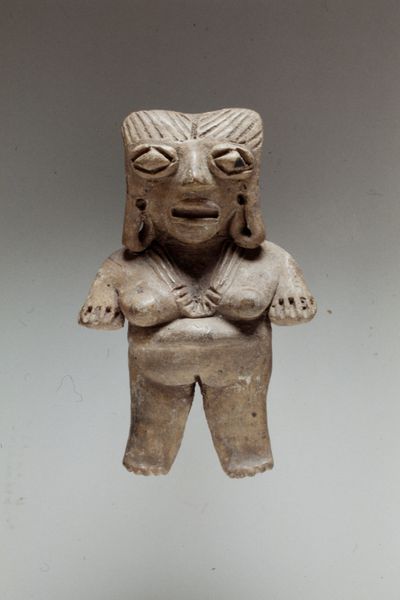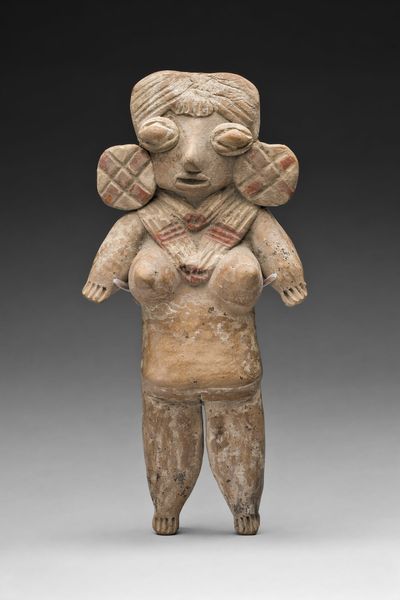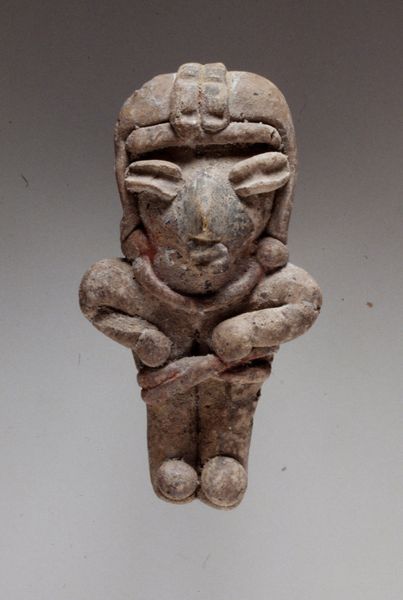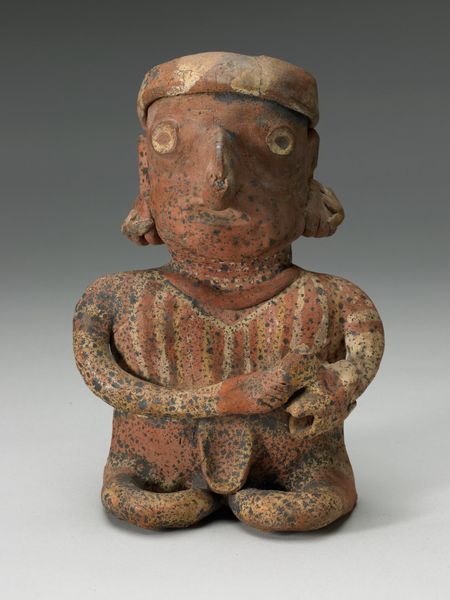
carving, sculpture
#
carving
#
sculpture
#
figuration
#
sculpture
#
indigenous-americas
Copyright: Public domain
Curator: We're looking at a 16th-century carving titled "Maize Deity," also known as Chicomecoatl. This striking sculpture resides here at the Met. Editor: My first impression is the feeling of solidity and age. The basalt has a rough texture, almost granular. The monumentality of its form exudes the power of belief systems and long lost traditions. Curator: Precisely! This piece adheres to very strict representational conventions of Aztec sculpture. Notice the geometric, almost architectural form. The deity’s features are minimally defined but potent: its gaze direct, its posture unwavering. Semiotically, we read the various elements as signifiers of the goddess’s attributes. The headdress with the rosettes on the sides indicate the Chicomecoatl, the goddess of nourishment and maize. Editor: The selection of volcanic rock is perfect to indicate resilience. Considering the Aztec’s meticulous engineering of water systems for irrigation, you have to consider the cultural value placed on water, crops, and successful harvest as well as the skilled labor required to quarry the material, transport and work the stone into the symbolic form, so too a crucial part of the artwork. Curator: A fine point. The medium undeniably conveys permanence and power but let us consider, structurally, the formal choices here. Note the almost total frontality, the symmetrical balance that lends this piece its inherent stability. And that, itself, transmits power—it's imposing. Editor: I agree! From a material perspective, it embodies Aztec sophistication from agricultural to technological proficiency, while celebrating the source of it all. The making process gives agency to the agricultural practice by rendering it monumental in durable stone. Curator: Yes, quite so! It’s an intersection between conceptual and literal representation of values, manifested through carefully prescribed style. The figure, simplified but immediately legible within its cultural context. Editor: Ultimately, this statue acts as a crucial vessel through which ritual and labor meet, making a deity approachable but ever powerful in tangible form. It is a wonderful intersection of land, people and nature. Curator: Indeed, a fascinating glimpse into a world that once revered the cyclical promise of nourishment. Editor: A tribute rendered permanent and now a fascinating object through which to analyze past societal structures.
Comments
No comments
Be the first to comment and join the conversation on the ultimate creative platform.

